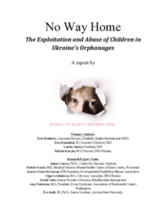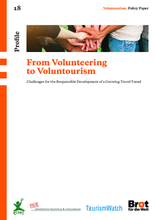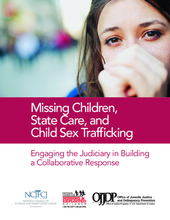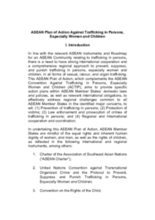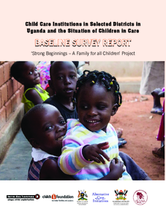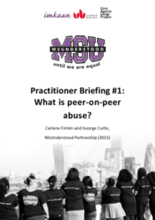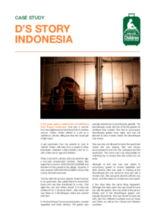Displaying 291 - 300 of 468
This report is a product of a three-year investigation by Disability Rights International (DRI) into the abuses experienced by children - both with and without disabilities - in large-scale institutions, psychiatric facilities, and boarding schools in Ukraine, of whom there are nearly 100,000, according to the report.
The 'Tackling CSE Toolkit' is designed to assist frontline practitioners working with children in identifying Child Sexual Exploitation and taking appropriate action.
This publication serves as a guide for responsible voluntourism, both for volunteers and volunteer tour operators.
The case study, which accompanies the Global Study on Sexual Exploitation of Children in Travel and Tourism, tells the story of Kate, a woman from the US who was sexually exploited as a child.
This technical assistance brief answers the question “What steps can a judge take when a child runs away or goes missing from care?” The brief is intended to educate juvenile and family court judges in the United States on the steps to be taken to assist in in locating and recovering children who go missing from care.
This ASEAN Plan of Action, which complements the ASEAN Convention Against Trafficking in Persons, Especially Women and Children (ACTIP), aims to provide specific action plans within ASEAN Member States’ domestic laws and policies, as well as relevant international obligations, to effectively address regional challenges common to all ASEAN Member States in the identified major concerns.
This case study of the child protection system in the United Republic of Tanzania is part of a UNICEF global initiative, undertaken in collaboration with Global Affairs Canada to document national child protection frameworks to gain an understanding of the country, the response of government and other actors, as well as other factors contributing to success in protecting children from violence, exploitation and abuse.
This report presents findings of a baseline study for the Strong Beginnings -- A Family for all Children project.
This briefing outlines what current research tells us about the nature of peer-on-peer abuse, and considers what this might mean for building a response.
The case study, which accompanies ECPAT's Global Study on Sexual Exploitation of Children in Travel and Tourism, tells the story of Dahlia, a 15 year-old girl from Indonesia who is a survivor of child sexual exploitation.

